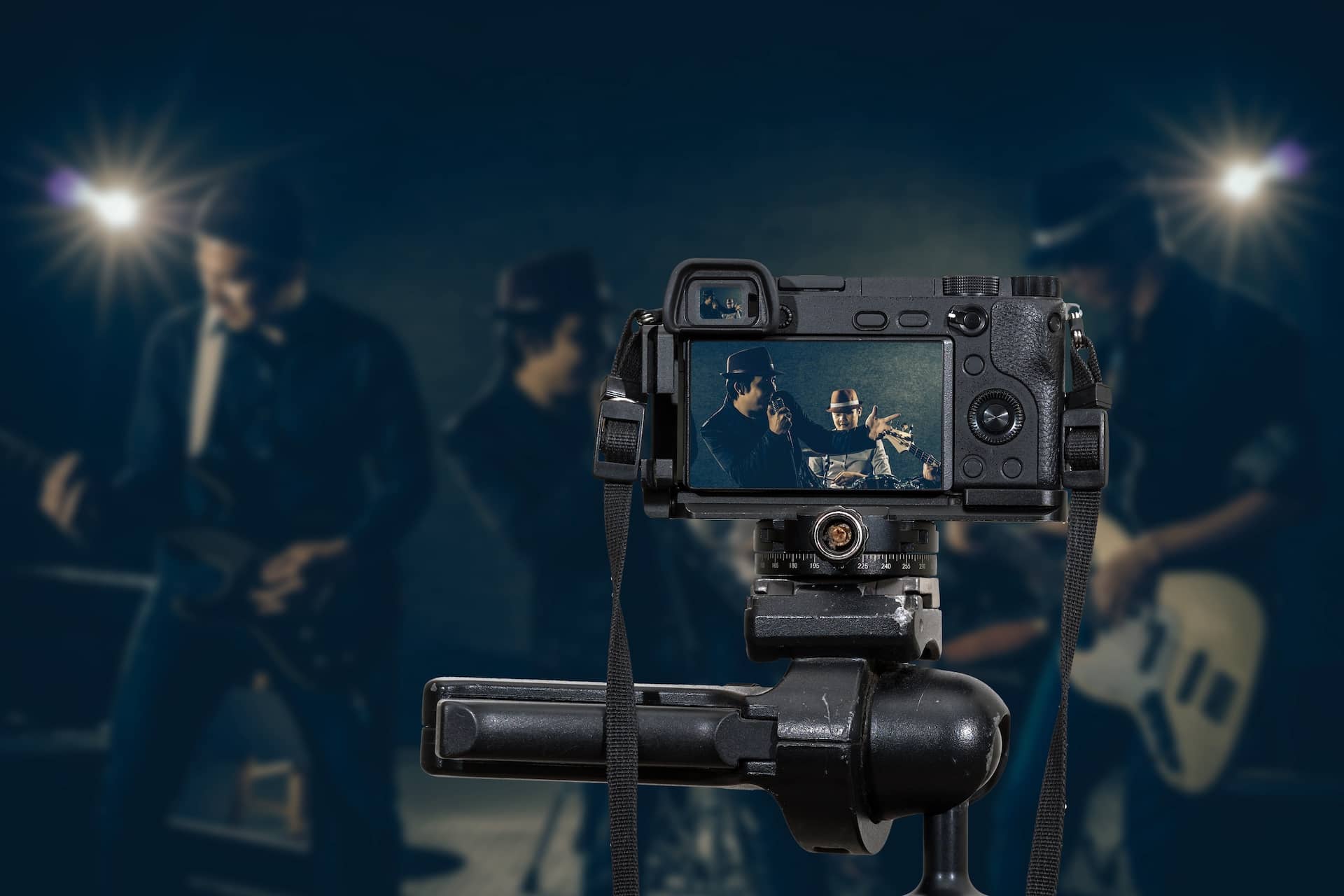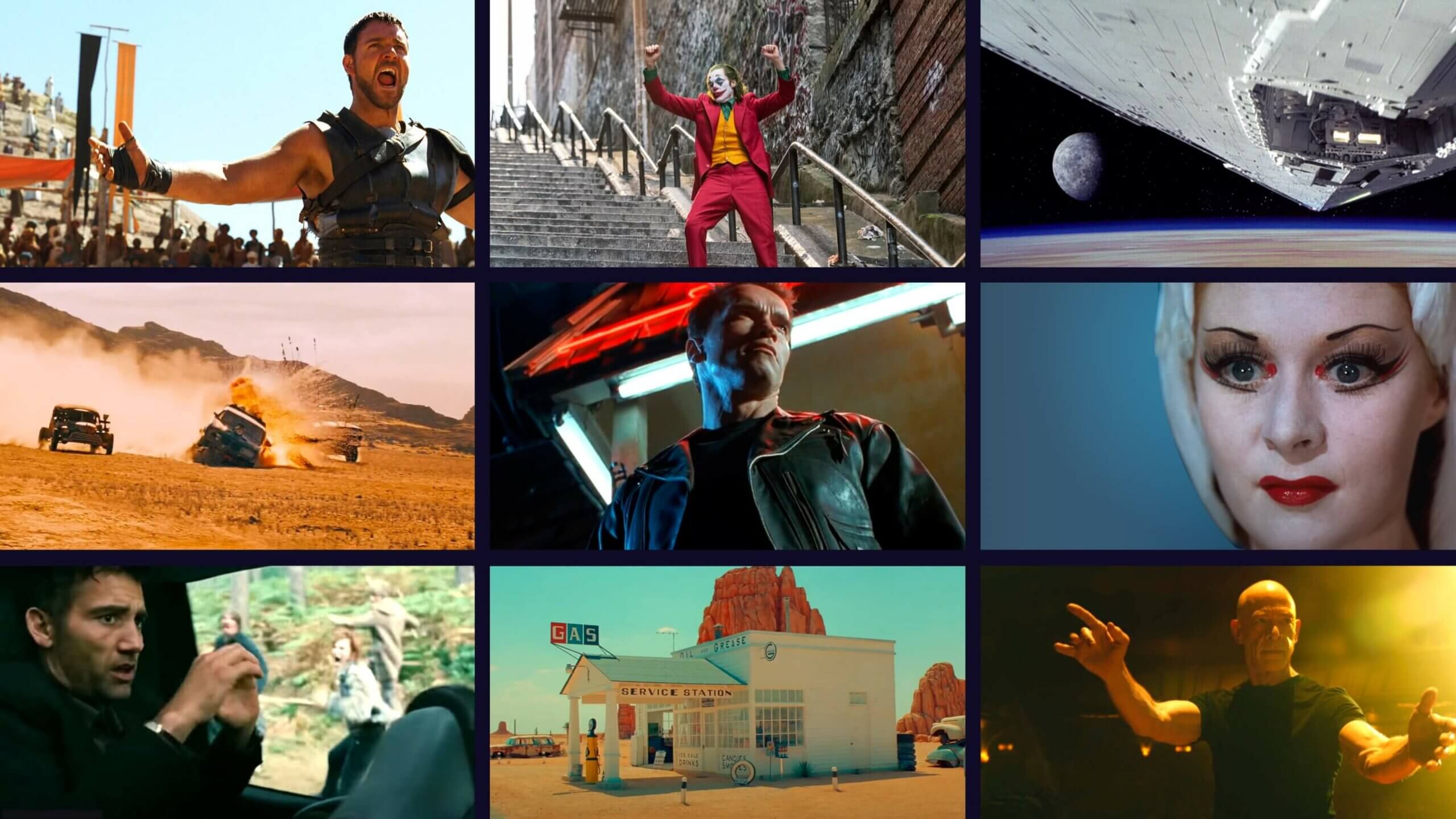How you move the camera is a sort of language, a way to communicate to the audience apart from dialogue. There are one million ways to move the camera to complement the narrative. And camera panning is just one way to speak — a simple movement that speaks volumes. So, what is a camera pan and how can it be used to speak directly to the audience? Let’s define it and look at some examples.
Watch: Art of the Whip Pan
Camera Panning
Defining pan camera movement
If you’ve seen even one movie, you've seen a camera pan. And of all camera movement options, it is perhaps the least dynamic or interesting — but that's what makes it so useful.
A camera pan is so ubiquitous that it doesn't tend to draw the audience's attention. They remain engaged in the film, which is something most directors are looking for — giving them an immersive experience.
CAMERA PAN DEFINITION
What is a camera pan?
A camera pan is horizontal movement in which the camera moves right to left (or vice versa) from a central axis. Taken from the word "panorama," the physical position of the camera itself does not move. Instead, the panning refers to the swiveling left to right mounted on a fixed location. This differs from dolly shots in which the mounting system itself moves. Of course, a pan can also be combined with different camera movements such as a tilt or tracking shots.
When to use camera panning:
- Establishes location of scene
- Tracks movement
- Elevates tension in a scene
The camera pan is just one of many types of camera movements in film. Here's a complete breakdown of each type along with their storytelling values and how they have contributed to some iconic moments in cinema history.
The Ultimate Guide to Camera Movement • Subscribe on YouTube
A panning camera can be achieved with just about any camera rig. Whether it is handheld, using a dolly or crane, or even a drone. Here's a video breakdown of the various types of camera rigs, how they work, and how they add to the "feel" and look of a shot.
Ultimate Guide to Camera Gear • Subscribe on YouTube
An Important Distinction
Pan vs. tilt
Tilting (or a tilt shot) is another basic camera move that is often confused with panning. Why? Well, while panning describes the left and right (horizontal) movement, tilting is the up and down (vertical) movement over a fixed axis.
We can only pan right or pan left. We cannot pan up or pan down. But again, we can always combine these two movements in the same shot, resulting in a "pilt" or a "tan." Just kidding, those aren't actual film terms.
A pan isn't the only form of camera movement, obviously. There are a number of ways (and reasons) to move the camera. This video is just one chapter in our Filmmaking Techniques Masterclass, and it covers camera movement and all its variations in greater detail.
Camera Movements • Join Filmmaking Masterclass
Camera panning is a simple enough way to move the camera but that doesn't mean it has to be boring or unmotivated. Let's take a look at how filmmakers have used this seemingly elementary maneuver to guide the audience's eyes, reveal location or information, and create tension.
Related Posts
PANNING FOR LOCATION
Establish the location
A pan allows the audience to see more of the scene. Camera panning establishes the location, and also tracks the movement of the characters or objects within that location.
Here's a classic example from Antonioni's The Passenger when Nicholson's character gets his jeep stuck in the sand.
Panning is ideal for revealing location
We know where we are (the desert) but a slow panning shot along the horizon makes the severity of his situation perfectly clear.
PANNING FOR Suspense
Elevate the tension
Also panning from one character to another can create more tension than a quick cut would. This type of camera movement allows the audience to experience the moment in real-time.
A slow camera pan can also delay an action and build anticipation. A fantastic example of this is in Paranormal Activity 3 when the babysitter sits alone in the kitchen.
The family has been experiencing paranormal phenomena recently so the father rigs up a camera to an oscillating fan.
Camera panning effectively builds suspense
So, the deliberate and slow panning back and forth across the room is a really effective way to build suspense. We KNOW we're going to see something but we don't know what it will be...and we have wait for it to be revealed.
PANNING FOR Character
Reveal the character
A lot can be communicated about a character with a single camera pan. In this example from Boogie Nights, we get a 360-degree pan around Dirk's bedroom. The camera isn't interested in Dirk, per se, but it does want to show us his world.
The slow camera panning across his walls tells us everything we need to know about this character.
Camera panning is great for introducing a character
In this one shot, we learn that he likes fast cars, beautiful women, rock 'n' roll, and Bruce Lee. This is a great example of economically communicating backstory and characterization into a single shot.
Related Posts
Camera Pan
How to do a pan shot
Pan shots are relatively easy to pull off. After all, it simply requires turning your camera.
A common tool used in pans is the tripod, which can help give your camera a smooth and consistent turning motion. A tripod will also allow you to lock off any vertical motion, ensuring that your pan will be on the same latitude the entire time. Don’t have a tripod in your inventory?
Check out our list of best tripods on the market.

Pan shot during a music video shoot
Of course, you don’t need a tripod to pull off a pan. A handheld pan is totally serviceable if a movie’s aesthetic calls for it.
But the logistics of a pan are just half the battle (if that). Pans come in many shapes and sizes.
Do you want your pan to be quick? Maybe even a whip pan? A speedy pan can add energy to a sequence, as director Damien Chazelle knows so well:
Masterful examples of the whip pan
A slow pan, on the other hand, has a totally different effect. It can be used to allow the audience to take in the details of a landscape, or the faces in a crowd.
Speed isn’t the only consideration. You’ll also have to decide which direction you want to pan, and you’ll need to plan what your beginning and end frames should look like. These are deceivingly simple but important decisions.
Filmmakers who have perfected the precise camera pan movement is Wes Anderson and his trusty DP Robert Yeoman. So much so, that it has become part of Yeoman's cinematography style.
Camera Panning
The Wes Anderson Pan
Now that we’ve looked at a few different uses for the pan, let’s examine the pan master: Wes Anderson.
Anderson’s films will employ a variety of pans for a variety of reasons. Take a look at this supercut, which is just from one of his movies (disclaimer — there are a few tilts in here):
Pans by Wes
A crucial element of Anderson’s pans is how immaculately framed they are. The camera has to land in the exact right spot to pull off the symmetry that Anderson is so well known for.
Timing is important, too. The pan at 0:40 illustrates this: the camera pans, lands on the hallway, and then Henckels sticks his head out. It’s like clockwork, and it’s usually in service of humor.
Remember that old quote: “comedy = tragedy + timing.”
Because they’re so meticulously constructed, Anderson’s pans are highly stylized, just like the rest of his movies.
But that doesn’t mean they’re not motivated — often, the pan is prompted by a character’s eyeline, or a sound off-screen.
For more on Wes Anderson’s unique style, check out our video on the director.
As Anderson illustrates, how you pan can influence the overall style of your film. Is your film a gritty, found-footage horror? Maybe you want a more imperfect, hand-held pan.
Up Next
Explore different camera movements
We've covered the camera pan shot but there are many other camera movements to discuss. As you amass your camera movement repertoire, you will be able to amplify your visual storytelling exponentially.
You're already on your way but the only question is which camera movement will you dive into next?
Showcase your vision with elegant shot lists and storyboards.
Create robust and customizable shot lists. Upload images to make storyboards and slideshows.
